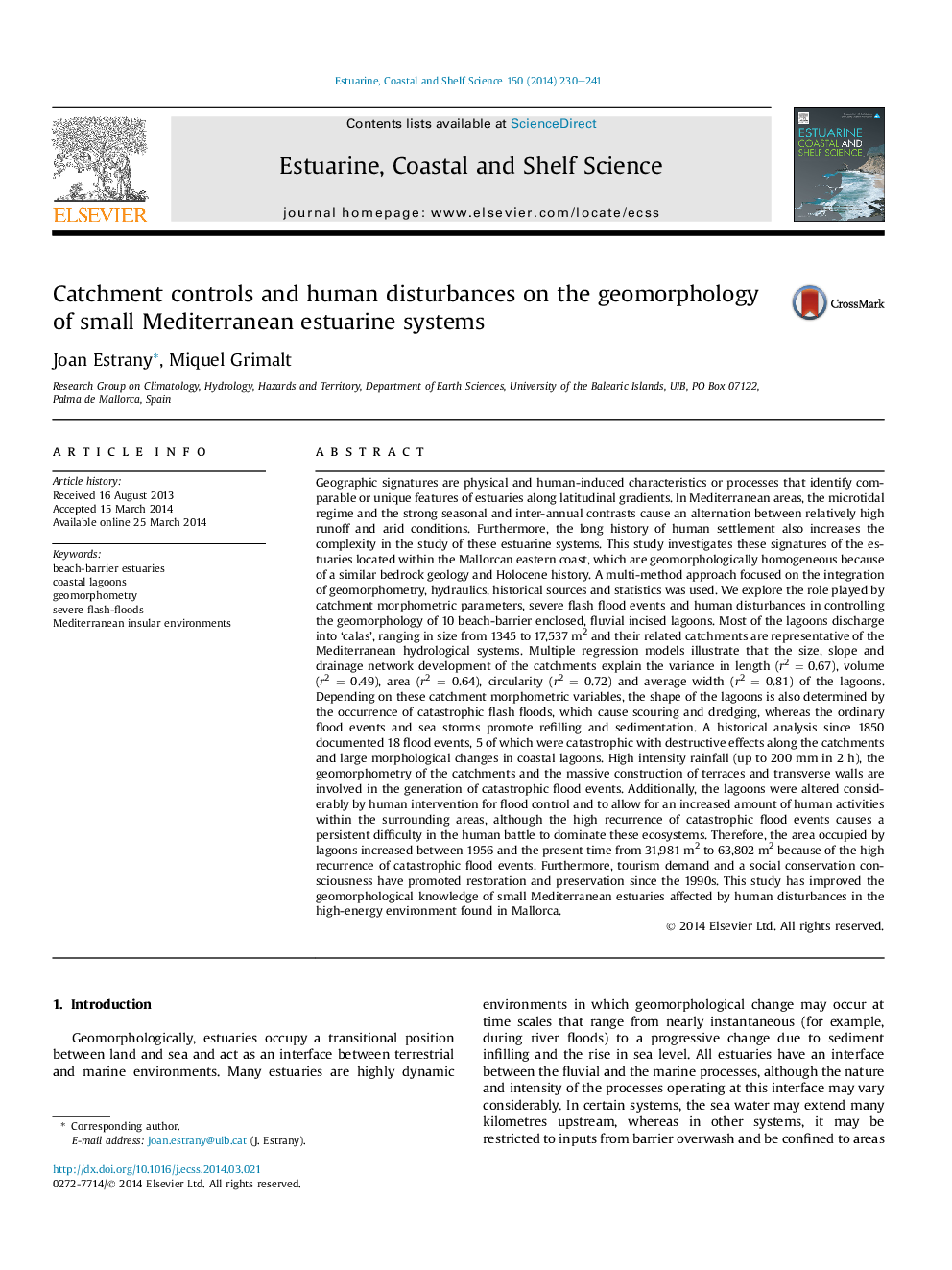| کد مقاله | کد نشریه | سال انتشار | مقاله انگلیسی | نسخه تمام متن |
|---|---|---|---|---|
| 4539630 | 1626646 | 2014 | 12 صفحه PDF | دانلود رایگان |
• Strong relationship between catchment processes and shape of lagoons was established.
• Lagoons shape is also determined by the occurrence of catastrophic floodings.
• Lagoons area was doubled between 1956 and 2010 due to tourism and social consciousness.
Geographic signatures are physical and human-induced characteristics or processes that identify comparable or unique features of estuaries along latitudinal gradients. In Mediterranean areas, the microtidal regime and the strong seasonal and inter-annual contrasts cause an alternation between relatively high runoff and arid conditions. Furthermore, the long history of human settlement also increases the complexity in the study of these estuarine systems. This study investigates these signatures of the estuaries located within the Mallorcan eastern coast, which are geomorphologically homogeneous because of a similar bedrock geology and Holocene history. A multi-method approach focused on the integration of geomorphometry, hydraulics, historical sources and statistics was used. We explore the role played by catchment morphometric parameters, severe flash flood events and human disturbances in controlling the geomorphology of 10 beach-barrier enclosed, fluvial incised lagoons. Most of the lagoons discharge into ‘calas’, ranging in size from 1345 to 17,537 m2 and their related catchments are representative of the Mediterranean hydrological systems. Multiple regression models illustrate that the size, slope and drainage network development of the catchments explain the variance in length (r2 = 0.67), volume (r2 = 0.49), area (r2 = 0.64), circularity (r2 = 0.72) and average width (r2 = 0.81) of the lagoons. Depending on these catchment morphometric variables, the shape of the lagoons is also determined by the occurrence of catastrophic flash floods, which cause scouring and dredging, whereas the ordinary flood events and sea storms promote refilling and sedimentation. A historical analysis since 1850 documented 18 flood events, 5 of which were catastrophic with destructive effects along the catchments and large morphological changes in coastal lagoons. High intensity rainfall (up to 200 mm in 2 h), the geomorphometry of the catchments and the massive construction of terraces and transverse walls are involved in the generation of catastrophic flood events. Additionally, the lagoons were altered considerably by human intervention for flood control and to allow for an increased amount of human activities within the surrounding areas, although the high recurrence of catastrophic flood events causes a persistent difficulty in the human battle to dominate these ecosystems. Therefore, the area occupied by lagoons increased between 1956 and the present time from 31,981 m2 to 63,802 m2 because of the high recurrence of catastrophic flood events. Furthermore, tourism demand and a social conservation consciousness have promoted restoration and preservation since the 1990s. This study has improved the geomorphological knowledge of small Mediterranean estuaries affected by human disturbances in the high-energy environment found in Mallorca.
Map of the geological units of Mallorca showing also the location of the studied lagoons and their related catchments. Digital Elevation Models for each lagoon derived from a detailed bathymetric and topographic GPS survey.Figure optionsDownload high-quality image (307 K)Download as PowerPoint slide
Journal: Estuarine, Coastal and Shelf Science - Volume 150, Part B, 5 October 2014, Pages 230–241
